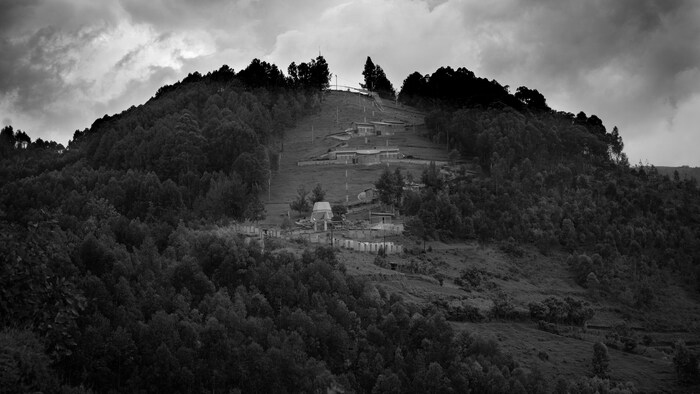The Bisesero Genocide Memorial is the final resting place for over 60,000 victims of the 1994 Genocide against the Tutsi. The Bisesero site commemorates the more then two months of resistance by Tutsi against the Genocide perpetrators before being exterminated. It’s one of Rwanda’s eight national memorials and a UNESCO World Heritage Site.
7 April 1997
60,000 Victims
26 June
The Bisesero Genocide Memorial officially opened on 7 April 1997. It is one of Rwanda’s eight national memorials and a UNESCO World Heritage Site. The Bisesero Genocide Memorial honors the bravery of ‘Abasesero’ Tutsi, who mounted a sustained resistance for over two months against the genocide perpetrators before being exterminated. The Bisesero Genocide Memorial is the final resting place for over 60,000 victims of the 1994 Genocide against the Tutsi. The reason for this large number is that Tutsis from communes of former Kibuye Prefecture sought refuge and assembled at Bisesero once they heard about the local resistance to the massacres against Tutsis.
The entryway features a triumphal arch, signifying that life has overcome death. The memorial includes a walkway made of nine rooms in three house blocks in memory of the nine administrative communes of the former Kibuye Prefecture. The walkway also has other symbolic design elements, such as a rock surrounded by nine spears, which immortalizes the weapons that were used to repel and fight the killers.
Historically, Bisesero was populated almost exclusively by Tutsi, who belonged to the Abanyiginya, Abakono, Abahima, Abagesera, and Abasita clans. The hill was part of the Rusenyi Chiefdom, led by Chief Fundi, son of Rwagataraka. Later on, Bisesero was led by Bwanakweli, son of Nturo, who remained in control of the chiefdom until 1960, when Hutu systematically replaced Tutsi chiefs and sub-chiefs under the tenure of Colonel Guy Logiest.

In Kibuye, the Genocide started on 7 April 1994. Tutsi in the area left their homes and fled to the hills of Muyira, Gitwa, Kigarama, Bisesero, Murambi, Uwingabo, Gisoro, and Karongi. The Tutsi of Kibuye organised resistance units on all the hills; those who were defeated eventually joined the Abasesero.
The Tutsi of Bisesero refused to take refuge in churches or other public buildings. This helped them survive and continue to fight the killers. Under the leadership of elders such as Aminadab Birara, women and children fought with stones, and young men took up spears and machetes to resist Hutu attackers. They set up a place to care for the injured, placing them inside ditches in Nyiramakware and Ruvuna and treating them with cow’s milk. They were also proactive in their assaults, which instilled fear in the Interahamwe.

In February and March 1973, as in other parts of the country, houses owned by Tutsi were burned and looted in all the communes of Kibuye. Tutsi women from Kibuye, especially girls, were accused of being arrogant and provoking Hutu men. Hutu students from Nyanza came all the way to Kibuye to chase away Tutsi students from the École Technique de Kibuye, Kirinda and Birambo schools.
With the outbreak of civil war in October 1990, many Tutsi in Kibuye were automatically accused of being ibyitso, or accomplices of the RPF Inkotanyi. On 5 October, the day after the RPF’s attack on Kigali, 90 Tutsi were jailed in Kibuye. The former director of the Kibuye Prison, Fransisco Mugemangango, oversaw the torturing and killing of many of the Tutsi jailed at w that time.
On 3 May 1994, Jean Kambanda, the Prime Minister of the genocidal interim government, presided over a meeting in Kibuye during which Prefect Kayisheme blamed the lack of security in Kibuye on Bisesero. Kayisheme asked for backup in order to fight the recalcitrant Abasesero. Afterward, government soldiers and Interahamwe militias from Cyangugu and Gisenyi were brought by bus to Kibuye. Coordinated assaults on Bisesero Hill took place on 13 and 14 May, killing many Tutsi. Allegations have been made that French soldiers were on site and involved in these attacks, even before Opération Turquoise was underway.
According to African Rights, 20,000 out of 50,000 Tutsi who had gathered in Bisesero had survived by the end of June. When Opération Turquoise forces arrived in the area, the remaining Abasesero resistance fighters came out of hiding, only to be abandoned by the French for four days, which allowed additional killings to take place. The genocide in Bisesero officially came to an end on 30 June 1994.
The genocide against the Tutsi begins. Several opposition politicians and Hutu officials opposed to the Genocide are assassinated.
The genocide against the Tutsi begins. Several opposition politicians and Hutu officials opposed to the Genocide are assassinated.
A life Story to tell.
Inkuru ya Noel..
The Genocide Perpetrated Against TUTSI (1994 – 2009) Challenges and Prospects